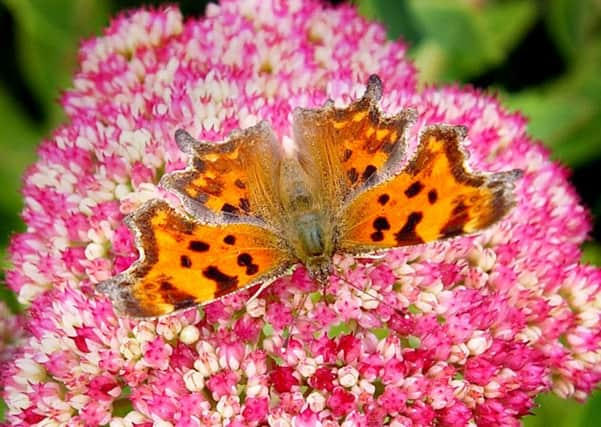Rothbury, Wildlife Trust


Members of the Coquetdale branch of the Wildlife Trust were treated to a most interesting talk by Stewart Sexton, whose subject was Moths – Howick’s Dark Secret.
Stewart is very fortunate to live in a place where there is very little light pollution. Consequently, he is able to put moth traps out four of five times a week, and thus record the moths in the area.
Advertisement
Hide AdAdvertisement
Hide AdHe began his talk by showing that not all moths are drab brown insects and that many butterflies are also brown.
There have been 1,400 species of moth recorded in Northumberland, but only 30 species of butterfly.
He explained some of the differences that are perceived to be between moths and butterflies.
These commonly-held views include, for example, that butterflies rest and feed with open wings whilst moths have closed wings; that butterflies are out in the day and moths come out at night; and also that some moths have feathered antennae.
This is, however, not always the case.
Advertisement
Hide AdAdvertisement
Hide AdIn fact, Stewart told us that the only hard and fast difference between moths and butterflies is a tiny little gland, called a frenulum, which can be found under the wings of a moth.
Stewart went on to tell the group the best places to find moths.
He had wonderful photographs to illustrate this.
He showed us the wall of the building that used to be the Spar in Longhoughton, with painted stippled white and under lights, where he used to find a lot of moths in the early morning.
They also go inside public telephone boxes, which are away from other light sources.
Advertisement
Hide AdAdvertisement
Hide AdIf you look at buddleia and lavender at night you will find a lot of moths. However, you have to shine light onto them gradually or they just drop off onto the ground.
Stewart told the group of an old method of attracting moths by mixing brown ale, black treacle and Muscovado sugar together and simmering them to burn off the alcohol.
When it is cooled, the sweet mixture can be painted onto telegraph poles, trees and leaves, and this attracts moths.
It also attracts other insects, and mice are especially fond of licking the concoction.
Advertisement
Hide AdAdvertisement
Hide AdStewart uses a Robinson Trap, which is 125 watts of mercury vapour. It is the UV content of the bulb which attracts the moths.
He puts open egg boxes inside the trap and the moths creep into the sections to rest. It is in there where he finds them in the morning.
Stewart went on then to show some fabulous photographs of different moths, which proved to our members that they certainly are not all drab brown insects that many people believe them to be.
They vary in size greatly, from really tiny to some as big as a hand.
Advertisement
Hide AdAdvertisement
Hide AdFinally, Stewart showed a photograph of a death head moth, which he had incubated and hatched out from a caterpillar, which was sent to him from down south. It was a truly awesome specimen.
Stewart catches some 13,000 moths a year.
There are 350 different species of moth just in the area around his house, and he showed us what fascinating and surprising moths are out there to see.